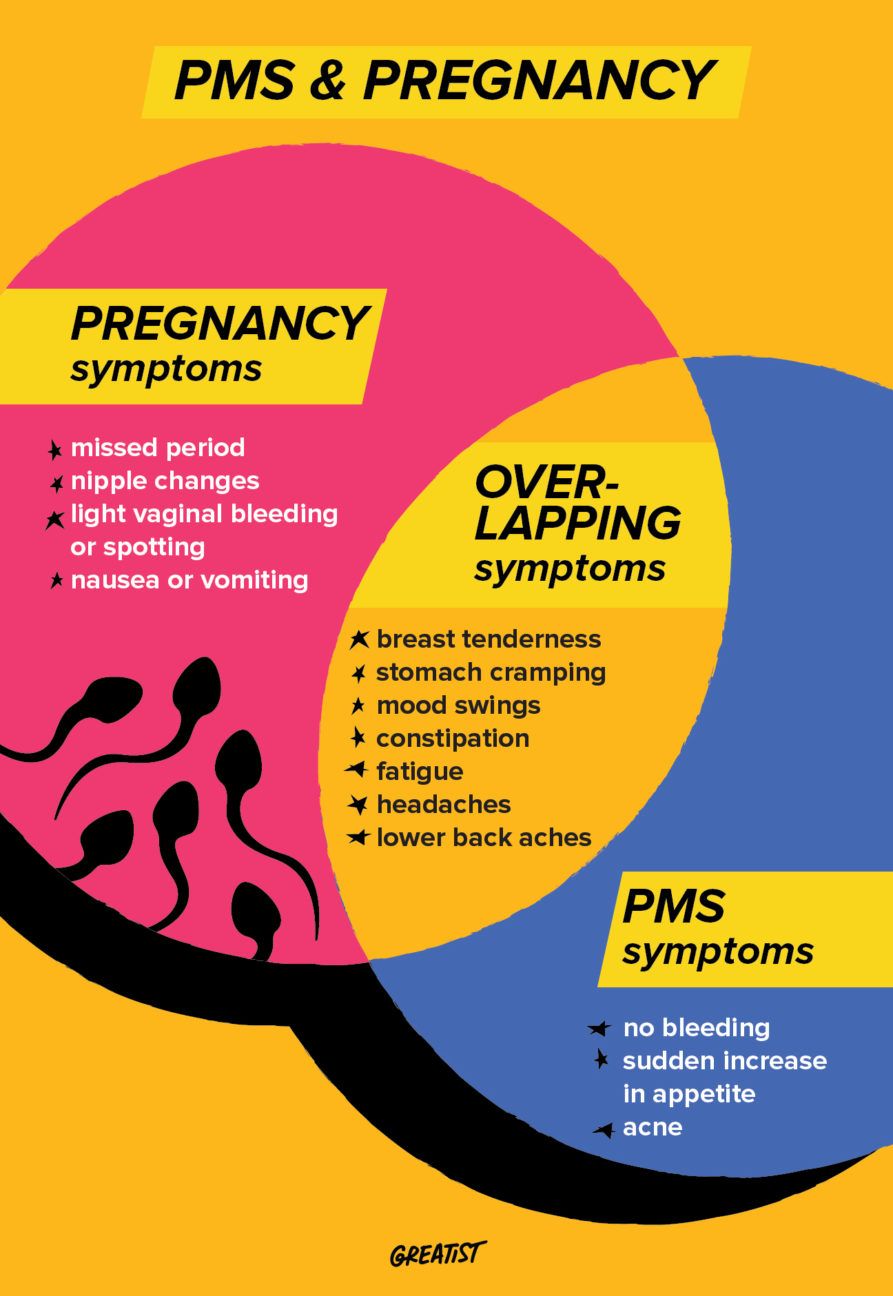So, you have cramps. First off, that sucks. It also sucks to not be quite sure what’s causing those womb kickers.
When it comes to implantation cramps vs. period cramps vs. other cramps, it’s kind of a need to know situation. As in you need to know if there’s a little someone about to grow inside you… or not.
While PMS symptoms mimic early pregnancy signs, implantation cramps and period cramps are different.
If the inside of your toilet looks like a scene out of Alien, then you already know your cramps are period related. Menstrual cramps are triggered by prostaglandins (substances associated with pain and inflammation) that make the uterine muscles contract.
If you’re period’s running late, late for its very important date, then you may not feel as confident. Implantation cramps can be an early pregnancy symptom.
Some women feel cramping or pain during the implantation process. Pain tends to be mild or moderate rather than intense or severe.
PMS (premenstrual syndrome) can seem strangely similar to early pregnancy, given the overlapping symptoms.
During ovulation, an egg hangs out in the fallopian tubes bracing for an onslaught of sperm. If an alpha-sperm makes it in time, the egg gets fertilized.
The zygote (fertilized egg) makes its way down into the uterus, becomes a morula, and then develops into a blastocyst. The blastocyst (let’s call it Lil’ Blasto) will then burrow into the uterine lining because it needs a blood supply to become a fetus.
While this sounds eerily like the plot of a sci-fi film, it’s just the process of implantation. And you too can grow your own alien sidekick.
When egg meets sperm, your body preps to serve and protect. It lowers your estrogen levels and increases progesterone to help your uterine wall accept implantation.
Lil’ Blasto has 6 to 10 days following conception to implant itself. Implantation usually happens 6 to 12 days after ovulation.
Once it’s been accepted and starts drinking your blood, your body starts preparing the main course — your placenta. And thus begins the next round of early pregnancy symptoms.
Within 2 weeks of implantation, your body produces enough hCG (human chorionic gonadotropin hormone) to trigger a positive pregnancy test result.
Some light bleeding or spotting might happen 10 to 14 days after conception. It’s called implantation bleeding. In a 2010 study, 25 percent of women bled during their first trimester. Only 8 percent bleed heavily.
Out of those who had spotting and light bleeding, 28 percent also reported pain, whereas 54 percent of those who bled more heavily experienced pain. Most bleeding lasted less than 3 days.
If pregnancy is a no-go, then estrogen levels rise, you get your period, and the cycle starts all over again.
FYI: Anti-inflammatory meds like aspirin might increase the risk of miscarriage, so avoid taking them if your goal is baby making.
All people are different, and symptoms of a bun in the oven vary from person to person. But here’s a list of the most common ones:
- missed period
- nipple changes
- swollen, heavier, fuller breasts
- light vaginal bleeding or spotting
- nausea or vomiting
- food or smell sensitivity
- nasal congestion or nose bleeds
- dizziness or faintness
- elevated body temperature
You’ll need to wait 1 to 2 weeks for your body to build up enough hCG, otherwise it won’t show up in your blood or urine. This can lead to a false negative when you take an at-home pregnancy test. The same is true for a test at the doctor’s office.
Wait at least a full week after your missed period to take an at-home test. Levels of hCG can be detected by tests 12 to 15 days after ovulation.
A blood test can detect hCG a week after conception, but unless you’re tracking your cycle closely, it’s difficult to know whether enough hCG has built up.
See a doctor if you suspect you’re pregnant, especially if you’ve had a positive urine test. At-home tests are 97 percent effective at detecting pregnancy.
If you experience cramping or bleeding while pregnant you should see your doctor. And if you experience stomach cramping that seems unrelated to your period or pregnancy, it’s best to get a doctor’s opinion.
Implantation cramps differ from period cramps, and they’re not the same for everyone. You can track your period, ovulation, and sexy time with an app to help you know if you’re more or less likely to be pregnant.
Only a pregnancy test taken at the right time can tell you for sure if you’re pregnant. Symptoms alone can’t give you a definitive answer.
Remember:
It takes 2 weeks from implantation before peeing on a stick will be accurate.



